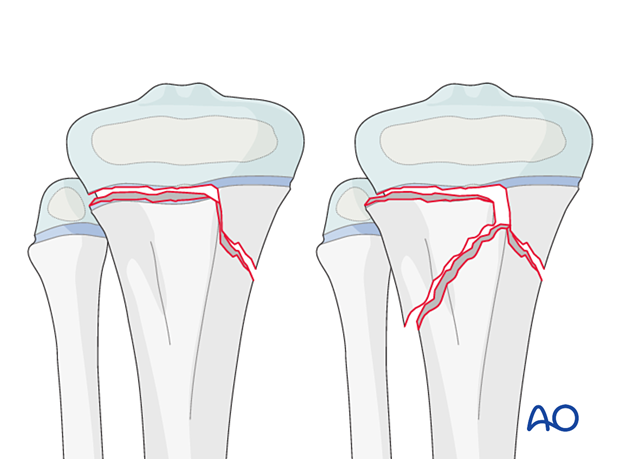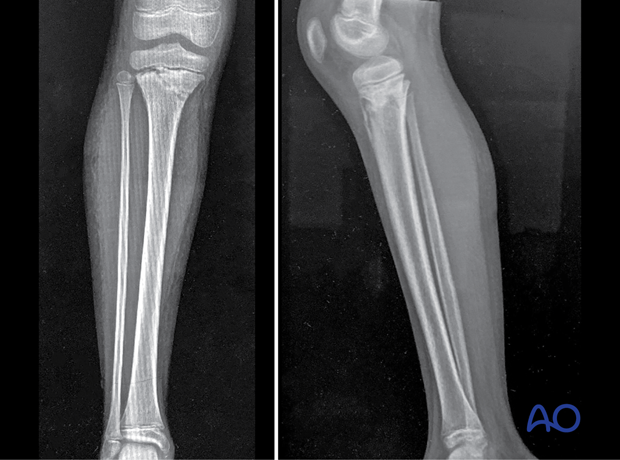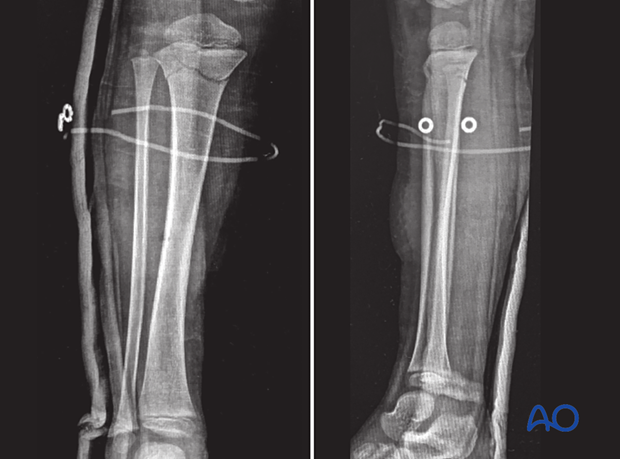Epiphysiolysis with metaphyseal wedge (Salter-Harris II)
Definition
Simple and multifragmentary Salter-Harris type-II fractures of the proximal tibia are classified 41t-E/2.1 and 41t-E/2.2.
Salter-Harris type-II fractures are physeal injuries with metaphyseal extension. This metaphyseal component is known as the Thurstan Holland fragment and remains attached to the epiphysis.
In higher-energy injuries, metaphyseal comminution may occur. These fractures are often unstable and are usually associated with a fibular fracture. The position of the metaphyseal fragment in a simple fracture is usually located medially. In multifragmentary fractures, the fracture configuration depends on the mechanism of injury.
An associated fibular fracture may have a different configuration and is classified separately.
Proximal tibial physeal fractures are associated with a high incidence of growth disturbance.

Further characteristics
The Salter-Harris type-II fracture is the most common pattern of injury involving the proximal tibial physis.
Periosteum may block reduction.
High-energy trauma often results in a multifragmentary fracture.
Soft-tissue injuries should be anticipated, and there is a greater risk of growth disturbance.
X-ray
AP and lateral x-rays should be obtained.
These x-rays show a simple Salter-Harris type-II fracture with a medial Thurstan Holland fragment in a 10-year-old patient.

These x-rays show a multifragmentary Salter-Harris type-II fracture in a 3-year-old patient.














